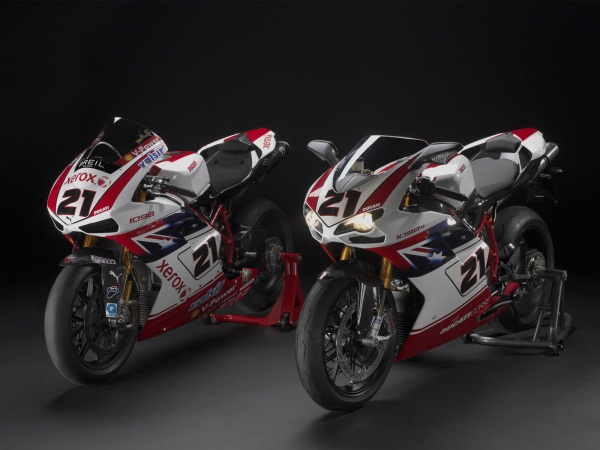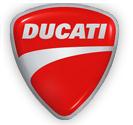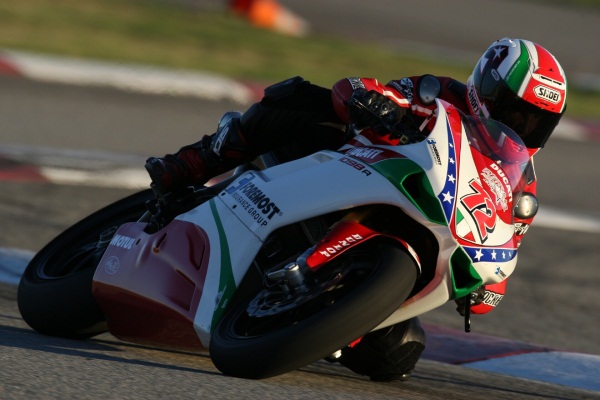This is no ordinary geocaching trading item!
Euro Racer - Ducati 1098R is a Travel Racer Formula Travel Bug, traveling from geocache to geocache on a very specific mission.
If you do not intend to log your visit on the Geocaching.com web site, please DO NOT TAKE THIS ITEM. Its travels and its progress requires you to log that it is being taken from this geocache. You will also need to log when you place it in another geocache. It's easy!
If you are willing to log your part of this Trackable's journey and place it in another geocache as soon as possible (after you log your find), grab it from this geocache.
My Current Goal:
EURO RACER - Ducati 1098R, Euro Racer TB Series



The only Motorcycle in this TB Series.
In 1926, three brothers, Adriano, Marcello and Bruno Ducati, founded Societa Scientifica Radio Brevetti Ducati in Bologna to produce vacuum tubes, condensers and other radio components, becoming successful enough by 1935 to construct a new factory in the Borgo Panigale area of the city. Production was maintained during World War II, despite the Ducati factory being a repeated target for Allied bombing.
Meanwhile, at the small Turinese firm SIATA (Societa Italiana per Applicazioni Tecniche Auto-Aviatorie), Aldo Farinelli began developing a small pushrod engine for mounting on bicycles. Barely a month after the official liberation of Italy in 1944, SIATA announced its intention to sell this engine, called the "Cucciolo" (Italian for "puppy," in reference to the distinctive exhaust sound) to the public. The first Cucciolos were available alone, to be mounted on standard bicycles, by the buyer; however, businessmen soon bought the little engines in quantity, and offered complete motorized-bicycle units for sale.
In 1953, management split the company into two separate entities, Ducati Meccanica SpA and Ducati Elettronica, in acknowledgment of its diverging motorcycle and electronics product lines. Ducati Elettronica became Ducati Energia SpA in the eighties. Dr. Giuseppe Montano took over as head of Ducati Meccanica SpA and the Borgo Panigale factory was modernized with government assistance. By 1954, Ducati Meccanica SpA had increased production to 120 bikes a day.
In the 1960s, Ducati earned its place in motorcycling history by producing the then fastest 250 cc road bike available, the Mach 1. In the 1970s Ducati began producing large-displacement L-twin (i.e. a 90° V-twin) motorcycles and in 1973, released an L-twin with the trademarked desmodromic valve design. In 1985, Cagiva bought Ducati and planned to rebadge Ducati motorcycles with the lesser-known Cagiva name (at least outside of Italy). By the time the purchase was completed, Cagiva kept the "Ducati" name on its motorcycles. In 1996, Texas Pacific Group bought a 51% stake in the company for US$325 million; then, in 1998, bought most of the remaining 49% to become the sole owner of Ducati. In 1999, TPG issued an IPO of Ducati stock and renamed the company Ducati Motor Holding SpA. TPG sold over 65% of its shares in Ducati, leaving TPG the majority shareholder. In December 2005, Ducati returned to Italian ownership with the sale of Texas Pacific's stake (minus one share) to Investindustrial Holdings, the investment fund of Carlo and Andrea Bonomi.
The 1098 shares more design elements with the older 998 than with its predecessor the 999, such as horizontally placed headlights and a non-integrated exhaust system. Another carryover from its 916/998 heritage is the single-sided swingarm. This return to a more traditional Ducati design has been welcomed by many Ducati fans who criticized the design of the 999. The Ducati 1098/1098 S/1098 R were available in black, red, yellow and a special edition 1098s in the Italian national flag colours of red, white and green called Tricolore. The 1098 was designed by Ducati designer, Giandrea Fabbro
"THE MISSION"
-
This TB Series want to drive some of the great Highways of the world
-
The Pacific Coast Highway - Coromandel - Bay of Plenty, NEW ZEALAND
-
The Pacific Highway - Sydney - Brisbane, AUSTRALIA
-
Pan American Highway - South America - Alaska, USA
-
Highway 401 - Ontario, Canada "Busiest Highway in the world"
-
The Great Ocean Road - Torquay - Allansford, United Kingdom
-
And possibly one of the most famous highways "The German Autobahn"